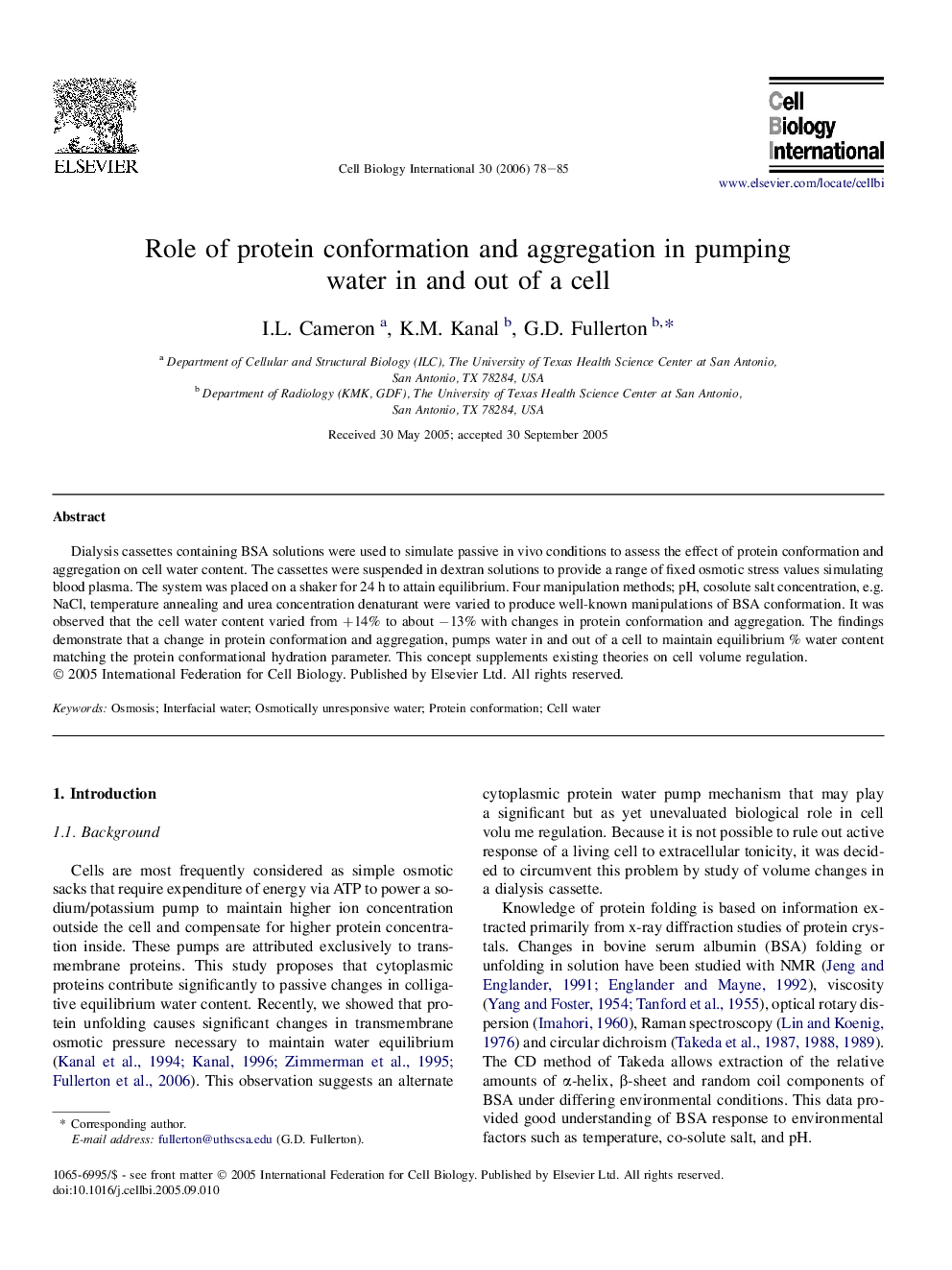| Article ID | Journal | Published Year | Pages | File Type |
|---|---|---|---|---|
| 2068027 | Cell Biology International | 2006 | 8 Pages |
Abstract
Dialysis cassettes containing BSA solutions were used to simulate passive in vivo conditions to assess the effect of protein conformation and aggregation on cell water content. The cassettes were suspended in dextran solutions to provide a range of fixed osmotic stress values simulating blood plasma. The system was placed on a shaker for 24Â h to attain equilibrium. Four manipulation methods; pH, cosolute salt concentration, e.g. NaCl, temperature annealing and urea concentration denaturant were varied to produce well-known manipulations of BSA conformation. It was observed that the cell water content varied from +14% to about â13% with changes in protein conformation and aggregation. The findings demonstrate that a change in protein conformation and aggregation, pumps water in and out of a cell to maintain equilibrium % water content matching the protein conformational hydration parameter. This concept supplements existing theories on cell volume regulation.
Related Topics
Life Sciences
Biochemistry, Genetics and Molecular Biology
Biophysics
Authors
I.L. Cameron, K.M. Kanal, G.D. Fullerton,
